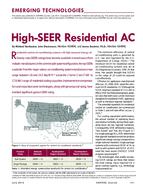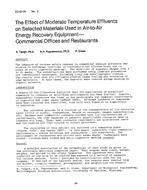The selection and control of heating, ventilating, and air-conditioning (HVAC) systems to provide controlled internal conditions in historic and other heavyweight buildings requires knowledge not only of the effectiveness of the systems in providing the required conditions quickly and efficiently but also on the long-term effects of the system and the sudden fluctuations of the internal conditions on the life of the building fabric and works of art. In the U.K. and other northern European countries, churches and similar historic buildings are only heated intermittently to provide acceptable conditions for the congregation during services and other functions. This paper reports results from the study of two of the most common types of heating system in churches in the U.K. — the conventional hot water radiator system and a direct gas-fired forced convection system. The two systems are compared in terms of their ability to maintain acceptable environmental conditions with minimum impact on the building fabric.
Units: SI
Citation: Symposium, ASHRAE Transactions, vol. 106, pt. 1
Product Details
- Published:
- 2000
- Number of Pages:
- 11
- File Size:
- 1 file , 320 KB
- Product Code(s):
- D-7346


